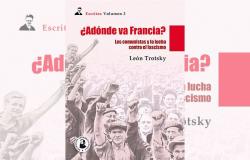All these fabulations are “gathered” in a conversation transcribed by Álvaro Devís, María Doménech and Oscar Cornago, responsible for capturing in a transcription the reflections shared between the three artists regarding art and the exhibition, in a conversation in Reykjavik they define it as “a kind of cacophony” but which responds to the artistic and philosophical concerns of all of them. For Llopis, resolving this in the same room is the result of a long, still unfinished journey: “The exhibition itself is a process until we get to where we are, we have to talk and see how the three of us relate to the same concepts. We try to understand The popular from pure and simple tradition, and also as something that constantly changes. We also talk about tradition and origin, and mainly about processes,” she reflects on the conversation.
“We see themes that we can identify but that do not have to be resolved, we do it through installation, images and exploring our own techniques.” With this, the assembly is handed over to unfinished pieces by artists who have not generated anything. expressly and that they are also transferred to a space that already has a “historical” charge as it is an emblematic place, something that for Llopis, together with the concept of being in an underground place, “already activates the work.” llopis defines this as a challenge, that of facing a space of “public and historical heritage” and making it his own, also that of transferring his dialogue to different levels within the same exhibition that operates without curatorship and without very clear rules, beyond of the conversation itself.
Tormo defends that the key is to accept that they are all in a “fall into the void in which they are accompanied”, and in turn they feel welcomed in this hollow space thanks to art: “We want to show the complex, the diverse and what “Sometimes it is incomplete, we also imagine a viewer who is not able to distinguish what each person’s work is,” he adds about this exhibition that goes completely against the rules and with which they rewrite the concept of a collective exhibition.
“For us there is no focused objective, it is not something that we have clear in our thinking while we put together the exhibition. It is an exhibition in which the process is drawn little by little, we are three people with quite complex origins and the story accompanies what happens to us at that moment,” adds Tormo, who remembers how the exhibition project begins by being forged through of a three-way conversation in an open space and with different horizons for each of them.
This conversation, which was never intended as something private, is revealed to the viewer through the room sheet, and allows us to understand the ins and outs of this unfinished exhibition in which, as the text says, “the story is based on the unforeseen, the result has neither head nor tail”, or in other words: “There is no beginning or a specific end (…) only a series of questions that arise and confront each other are answered. others.” Reykjavik explains that Becoming/Unbecoming It allows them to “articulate and disarticulate through art” generating a walk through the four common axes and thinking about the pieces not as something “loose or definitive but with a vision with perspective.”
To do this, they force themselves to talk for a whole day about the common points that unite them, taking into account what they have already worked on, that is, without generating new pieces and respecting the unfinished processes, contemplating art as it is. “In our practices there are elements and ideas that coexist but they do not have to be something final, but rather they are born from shared interests,” he explains about the unfinished pieces, “it is in this dimension of things in process in which we also talk about the art”.
“When we say that something is in process in that space of enunciation, a political dimension is lost, which art should have, which is to be exportable. The exhibition shows how we have worked with processes, with stress and with what art should be,” adds the artist. So, in Becoming/Unbecoming Art – although not definitive – is shown in a state of transition, it is the space itself that welcomes it and gives it meaning, generating a unique dialogue. All of this collects and reflects the definitive combination of the three artists, the light and the concepts that run through them. Also the art of conversation itself so that it is exportable and now public.
“The combination of all of them allows us to see what is happening to us, there are decisions that articulate something that is in disarray – the conversation – and the commitment is to defend the result beyond being sure of what we are doing,” adds Reykjavik about the exhibition. that defies the norms. The materials, the viewer, the room sheet, the day of conversation they have with each other and the analysis are the axes that allow anyone to take a peculiar walk through Becoming/Unbecoming, an exhibition that defies all exhibition rules, that does not even respond to the production criteria and that at the same time has as many articulations and disarticulations as there are eyes that look at it.






